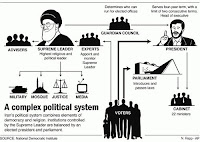Basic Addition & Subtraction
News stories on the latest International Atomic Energy Agency (IAEA) report suggested new reasons to fear that Iran is closer to a “breakout” capability than ever before, citing a nearly 50% increase in its stockpile of 20% enriched uranium and the installation of hundreds of additional centrifuges at the Fordow enrichment installation.
But the supposedly dramatic increase in the stockpile of uranium that could theoretically be used to enrich to weapons grade is based on misleading figures in the Nov. 16 IAEA report. The actual increase in the level of that stockpile appears to be 20%.
The coverage of the completion of the installation of 2,800 centrifuges at Fordow, meanwhile, continued the media practice of ignoring the linkage between large numbers of idle centrifuges and future negotiations on the Iranian nuclear program.
The latest round of media coverage of the Iran issue again highlights the failure of major news outlets to reflect the complexity and political subtleties of the Iranian enrichment program.
The IAEA report created understandable confusion about the stockpile of uranium enriched to 20% — also called 20% LEU (low enriched uranium). It does not use the term “stockpile” at all. Instead, it says Iran produced 43 kg of 20% enriched uranium during the three months since the August report and cited a total of 135 kg of 20% uranium now “in storage,” compared with only 91.4 kg in August.
Based on those figures, Reuters suggested that Iran might already be two-thirds of the way to the level of 200-250 kg that “experts say” could be used to build a bomb.
But analysis of the figures in the last two reports shows that the IAEA total for 20% LEU “in storage” actually includes 20% LEU that has been sent to the Fuel Plate Fabrication Plant in Esfahan for conversion to powder for fuel plates to be used by Iran’s medical reactor but not yet converted.
The November IAEA report includes the information that, as of Sept. 26 — six weeks after the data in the August report were collected — the total amount of 20% LEU fed into conversion process in Esfahan stood at 82.7 kg.
That figure is 11.5 kg more than the total of 71.25 kg fed into the conversion process as of the August report.
The difference between the two indicates that 11.5 kg had been taken out of the stockpile and sent to the Fuel Plate Fabrication Plant at Esfahan during September 2012.
In another indicator of the difference between the IAEA’s “in storage” figure and the actual stockpile size, the current IAEA report gives the figure of 73.7 kg of 20% LEU from the Fordow facility “withdrawn and verified” by the IAEA over the entire period of such enrichment. That total is 23.7 kg higher than the total of 50 kg from Fordow “withdrawn and verified” given in the August report.
A total of 23.7 kg of 20% LEU was evidently taken out of the stockpile available for higher level enrichment and sent for conversion to powder for fuel plates during the last quarter.
The current IAEA report nevertheless uses the same overall total of 96.3 kg of 20% LEU fed into the conversion process that it used in the August report.
Subtracting the 23.7 kg additional uranium “withdrawn and verified” by the IAEA during the quarter from the total 20% enriched uranium production of 43 kg during the quarter reduces the amount added to the stockpile of 20% LEU to 19.3 kg.
Adding the 19.3 kg to the August total of 91.4 kg gives a total for the stockpile of 110.7 kg — a 20% increase over the August level rather than the nearly 50% increase suggested by news stories.(G.Porter.)




Comments